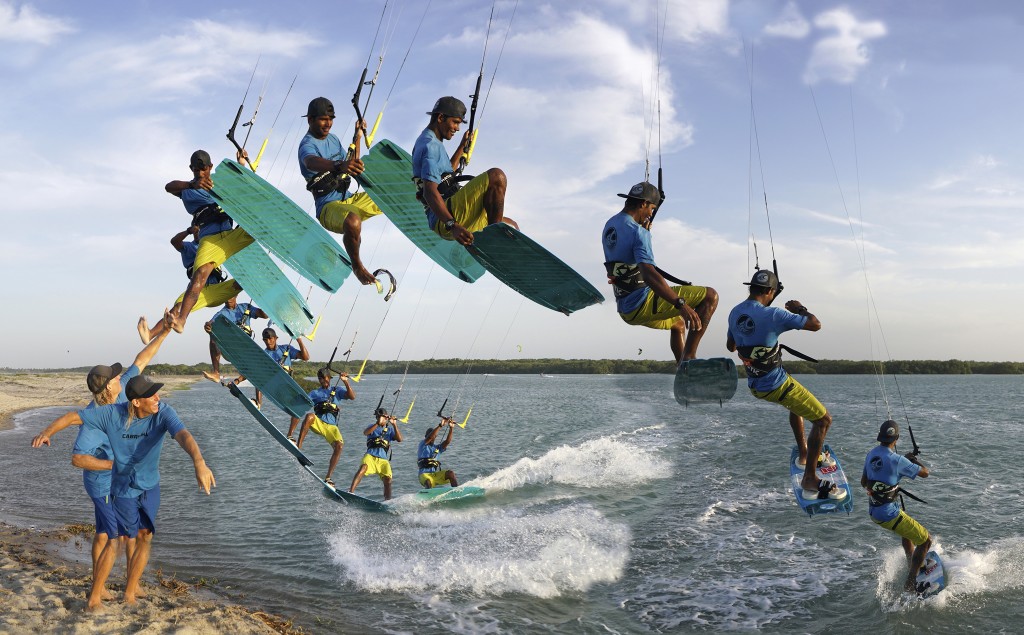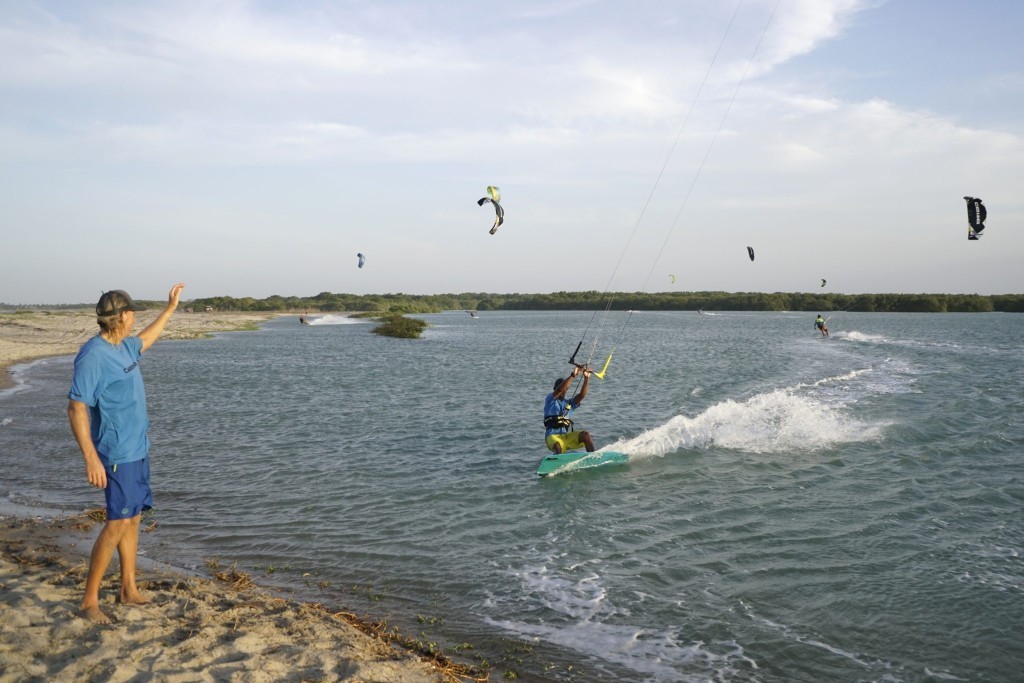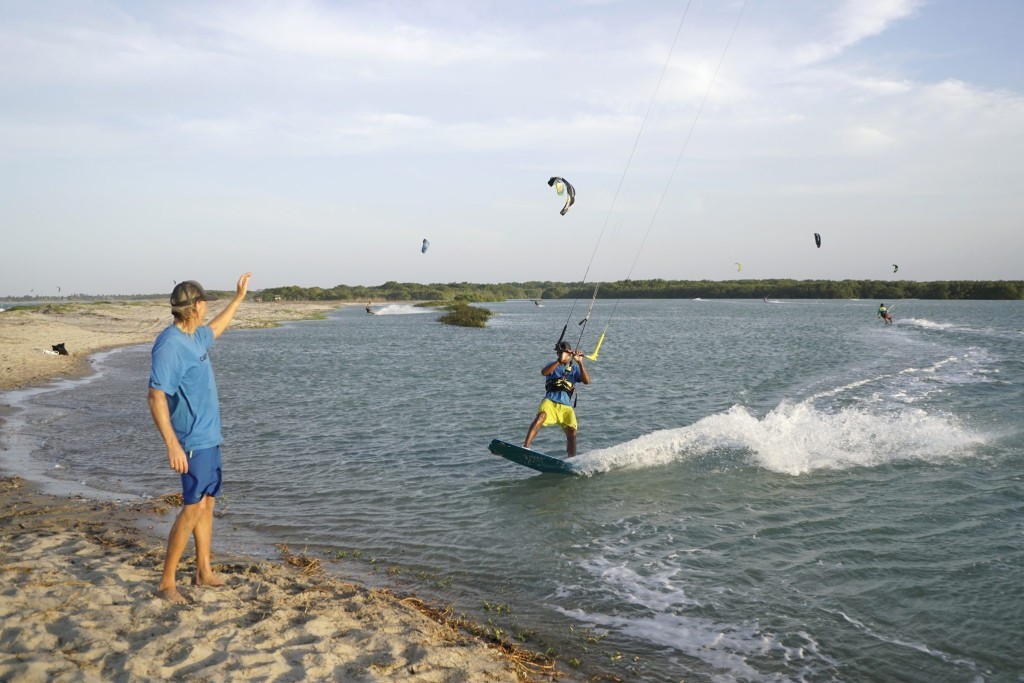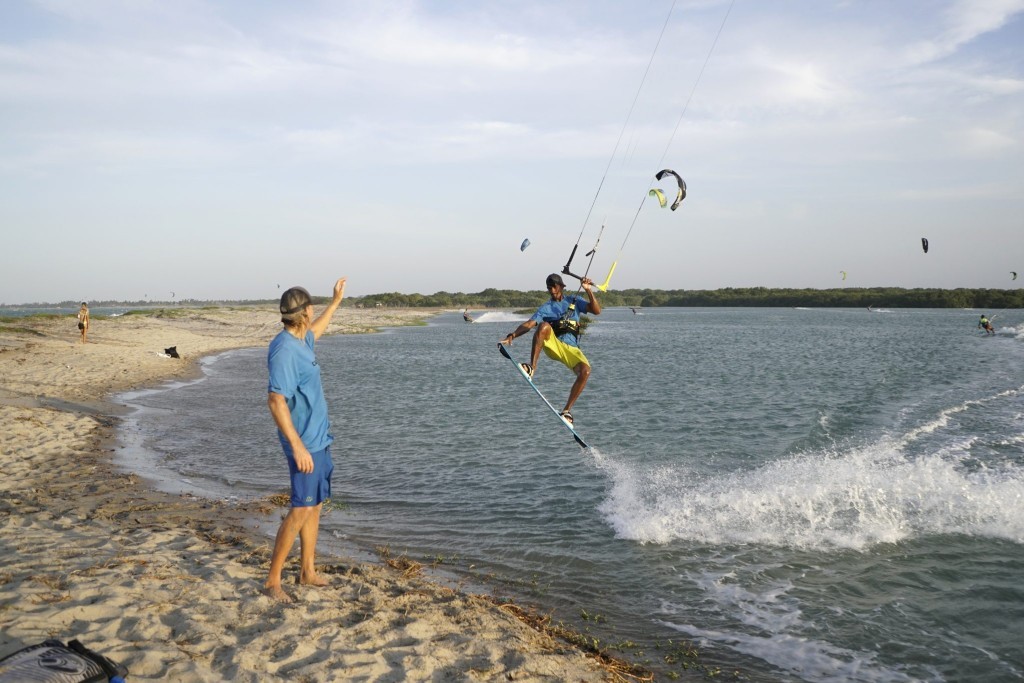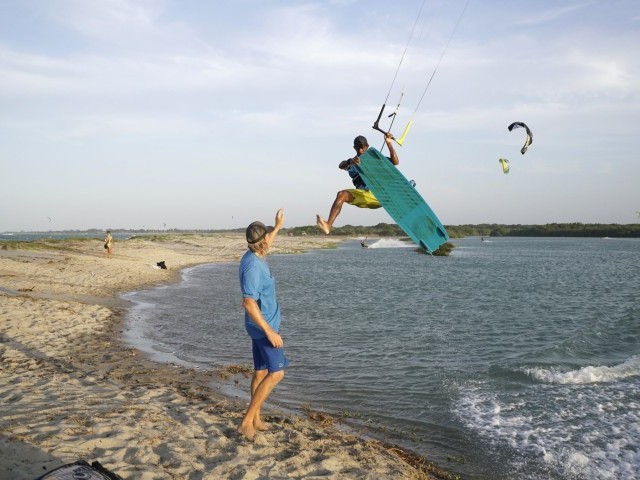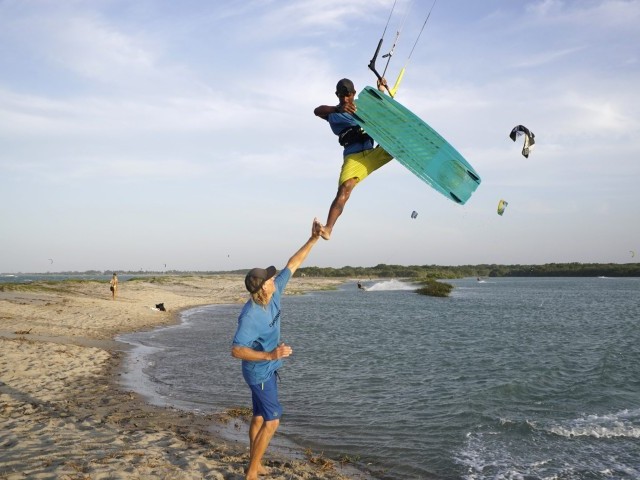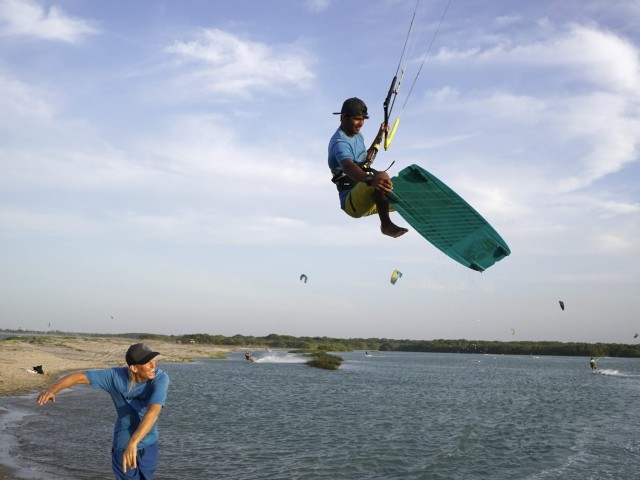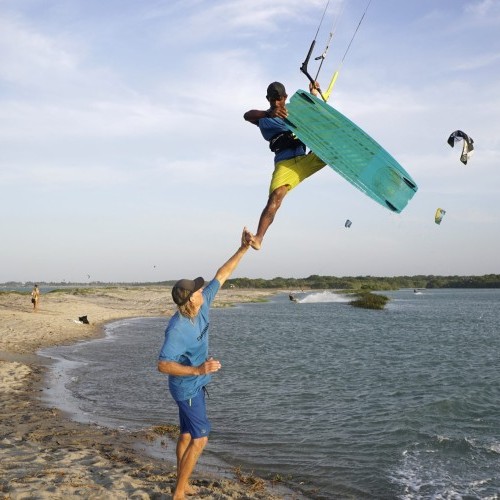
Foot 5 Transition
Technique / Intermediate
Introduction
Kiting with friends, whether it be pushing and motivating each other, laughing at one another or just having some good old-fashioned fun is often as good as it gets. If you’re not too cool for school, you’ll probably learn quicker also. This variation on the board hand plant transition isn’t however for those with ticklish feet. All you need is to find someone in a onesie on the beach, and you’re ready to go:)
Being a transition that requires you to plant on a given person or object without stopping, squashing them and maintaining some oomph to land means that you’ll need to pendulum. If you swing out from the water and over the given person/object you’ll be able to tag them before swinging back onto the water and away from them/it. That’s the idea, let’s see how it works in practice…
The Approach Pic A.
Once you’ve spotted your accomplice on the beach, you’ll need to line yourself up so you can take off upwind of them. To swing out under your kite, you’ll also want more speed than for a bog-standard air gybe. And of course, you’ll need enough power to get the necessary height. It goes without saying that if you intend to try this, it’s better to be too short than overshoot so build your aim up rather than going for broke on your first attempt. Heliarde has approached with good speed and is carving up into his take off rather than edging so that he can maintain speed. He’s given the kite a decent send so that he’s guaranteed the height.
Take Off Pic B.
Eying up Christian’s Cap, Heliarde pops up off the water, kicking off his back leg while pulling his bar in. This will send him up, and the pull in will give him some downwind travel so that he floats down towards the waiting onesie. He takes off quite a way out, and it’s also worth noting that he doesn’t level his bar as he wants the kite to stay slightly behind him, we’ll see why shortly.
Grab Pic C.
As soon as he can, Heliarde is going for the grab as once his foot is out, he can look through the sights and aim it at the target. He’s got the bar pulled in with his centred backhand so that he’ll still go up while flying down towards Christian. Aim for the same place that you’d grab the tail if you were jumping in the other direction as you want the grab to be second nature, while you concentrate on where you’re going.
Make or Break Pic D.
This is the tricky bit which will demonstrate your superb kite control or highlight your lack of it. From here on your path has been set but you still need to steer your way forwards, using the bar to speed up or slow down, drift right or pull left. And this is why you left the kite slightly behind you on take-off, as it can now act as both a break and accelerator. In this case taking off to your right - sheet in and you’ll slow down, move up and be pulled left, sheet out and you’ll carry on to your right and drop. These are subtle movements that work wonders. In the pic Heliarde holds his board up out of the way, extending his leg and using his foot as the crosshairs. In doing so guides his foot towards Christian’s hand. Optimo!
High Five Pic E.
In the infamous words of Mr Mike Smith all those years ago, “simple as that”. Once you make contact, you can sheet the bar out just a tad more to apply some pressure and stall the moment. We’ll be honest with you though; we couldn’t find the splinter:)
The Finale Pic F.
It’s well and good getting the shot, but in today’s life of video, you’ve got to stick the landing too. If you were planting onto something solid, then you could kick off, but when it’s an ageing kite coach best to us the kite to soften the blow. To get up and away Heliarde pulls the bar back in for some lift, which also pulls him back out towards the water. At the same time, he gets his foot back in the strap and starts to dive the kite in anticipation for landing. All that’s left is to point the board down wind and come back for another one.
Top Tips
The best way to learn and build up to landing on things and people is slowly. Start off by trying to transition over some soft sand, hovering over the same patch again and again. This will give you the feeling for how much you move and swing relative to power in the kite and speed off the water.
Probably best to ponder over the sequence and videos before recruiting your gullible victim…
Common Problems
The most likely issue you’ll have once you start to hit your target is that you’ll be stopping on it and then falling somewhat gracelessly. The reason for this is that you’re using the kite above you to steer you like a parachute onto your landing zone. However, the hand or whatever else is a mere stopover. And that is why you need to pendulum. It’s like being on a swing and someone catching you at the apex. As soon as they let go off, you swing again. Concentrate on some air gybes with the kite left behind you and see how that goes.
If it’s still tricky, you can always get your helping hand to move and make it a team effort…
Keystones
- Speed so that you can drift
- Send for height
- Pop to control and leave kite back
- Use foot as a sight
- Steer yourself by sheeting in and out
This technique article was in Issue 66 of IKSURFMAG.
Related
By Christian and Karine
Christian and Karine have been working together as a coaching team, running improver to advanced kitesurfing clinics since 2003.






